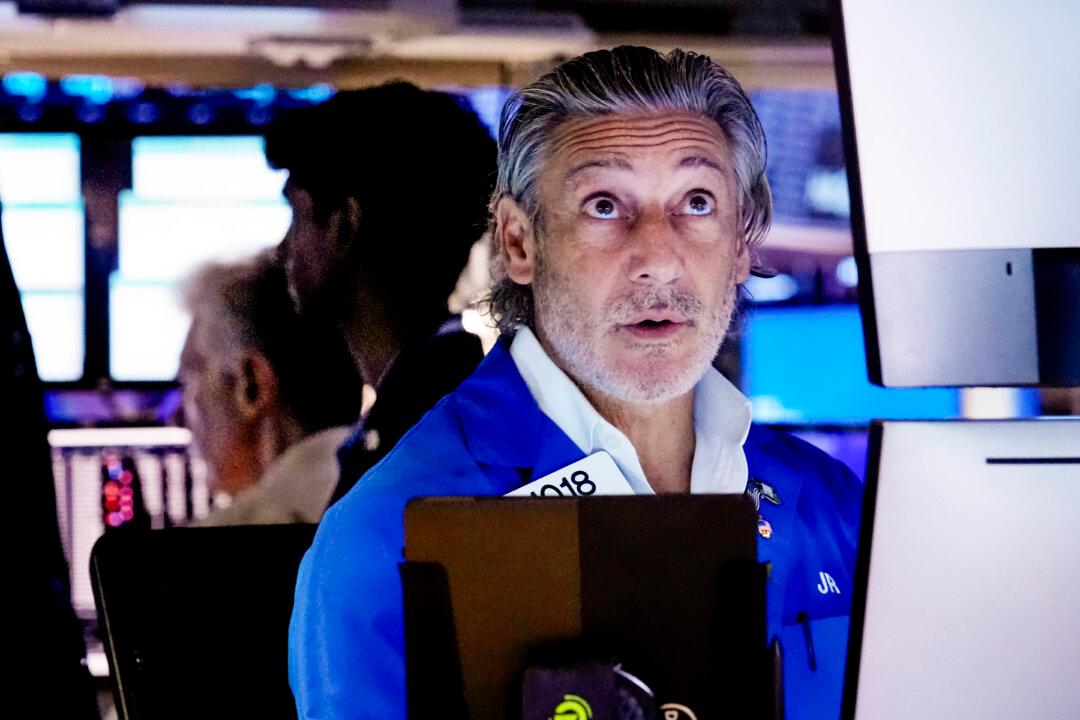The Dow Jones Industrial Average saw early gains on Wednesday before turning negative by midday.

The Dow Jones Industrial Average saw early gains on Wednesday before turning negative by midday, two days after it posted a more than 1,000-point loss amid fears of a possible U.S. recession.
As the market closed, the Dow dropped 234 points, while the Nasdaq Composite dropped 171 points, or 1 percent. The S&P 500 Index also posted a 40-point loss.
It came a day after the three major U.S. stock indexes clawed back some of their losses from a day earlier. The Dow Jones added 294 points, or 0.8 percent, the S&P 500 added 1 percent, and the Nasdaq Composite gained 1 percent.
Japan’s Nikkei 225 also increased 10.2 percent on Tuesday to claw back much of its 12.4 percent sell-off the day before, which was its worst since the Black Monday crash of 1987. Stocks in Tokyo rebounded as the value of the Japanese yen stabilized against the U.S. dollar following several days of sharp gains.
“Many investors are sitting on big gains in tech stocks ... so it’s important for investors to right size their risk,” said Michael Landsberg, chief investment officer at Landsberg Bennett Private Wealth Management, on Tuesday. “We expect this volatility to continue for a bit longer.”
For Tuesday’s gains, stronger-than-expected profit reports from several big U.S. companies helped drive the market. Kenvue, the company behind Tylenol and Band-Aids, for example, jumped 14.7 percent after reporting stronger profit than expected thanks in part to higher prices for its products. Uber rolled 10.9 percent higher after easily topping profit forecasts for the latest quarter.
Caterpillar climbed 3 percent after the maker of heavy machinery reported stronger earnings than expected.
The markets now await more commentary on monetary policy from U.S. central bank officials next week, in the run-up to the Jackson Hole event where Federal Reserve Chair Jerome Powell is scheduled to speak.
In the midst of Monday’s decline, several Fed presidents sought to reassure traders. Austan Goolsbee, president of the Federal Reserve Bank of Chicago, told CNBC on Monday morning that the central bank will “fix it” if the economy starts to go downhill.
“The Fed’s job is very straightforward: maximize employment, stabilize prices, and maintain financial stability. That’s what we’re going to do,” he said on CNBC’s “Squawk Box” program. “We’re forward-looking about it. So if the conditions collectively start coming in like that on the through line, there’s deterioration on any of those parts, we’re going to fix it.”
San Francisco Fed President Mary Daly said later that day that the Fed has the “extremely important” job of preventing the U.S. labor market from entering a downturn, while signaling that a cut in interest rates is likely on the way.
“How much that needs to be done and when it needs to take place, I think that’s going to depend a lot on the incoming information,” she said at a forum in Hawaii on Monday.
There will need to be “policy adjustments” in the coming quarter, Daly said. “From my mind, we’ve now confirmed that the labor market is slowing and it’s extremely important that we not let it slow so much that it turns itself into a downturn,” she added.
A surprise rate hike by the Bank of Japan on July 31—to a level unseen in years—had sparked a global stocks rout as investors unwound their sharp yen carry trade positions following a surge in the low-yielding currency, widely used for acquiring high-yielding assets.
But on Wednesday, BOJ Deputy Governor Shinichi Uchida said the central bank would not raise rates when financial markets are unstable, pushing the yen lower and boosting market sentiment.
Last week, the U.S. Department of Labor released its monthly report showing the United States only added 114,000 nonfarm payrolls in July, lower than anticipated, as the unemployment rate rose to 4.3 percent. That sparked a sell-off on Aug. 2 that continued Monday, before Tuesday’s gains.
https://www.theepochtimes.com/business/stock-market-drops-as-wall-street-tries-to-make-a-comeback-5701452?ea_src=frontpage&&ea_med=lead-story-0-title-0


No comments:
Post a Comment